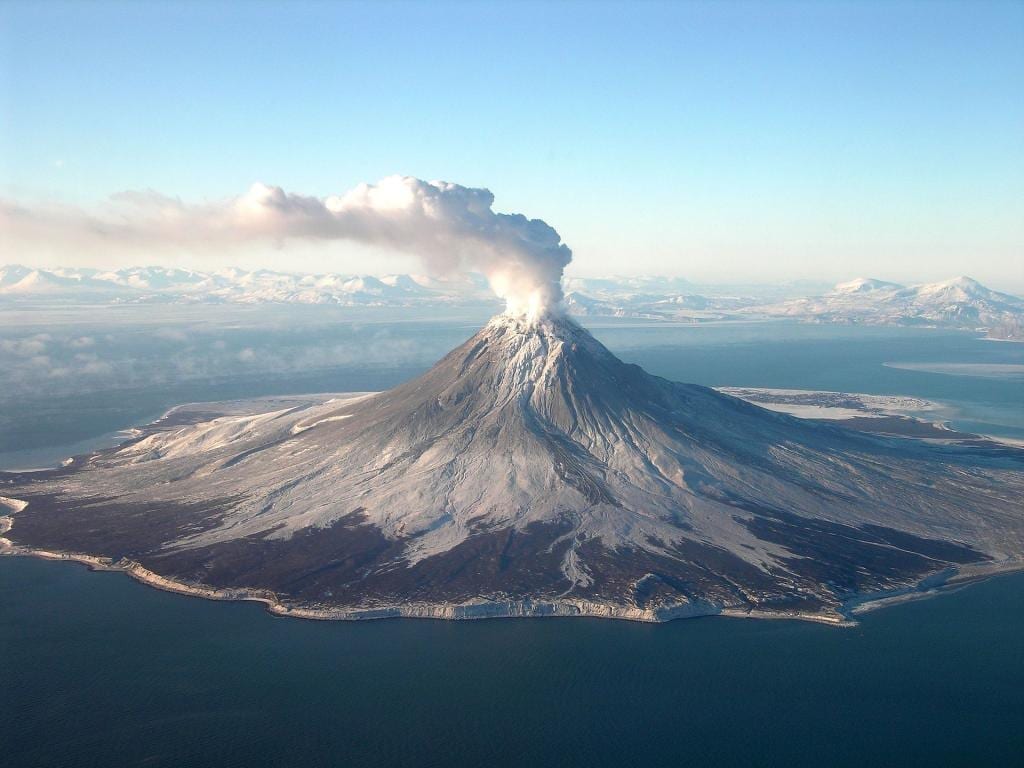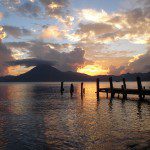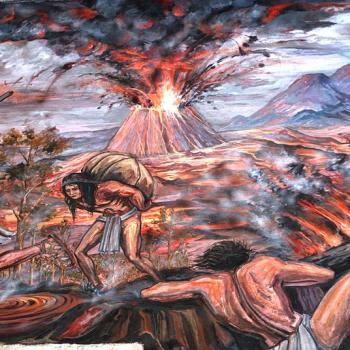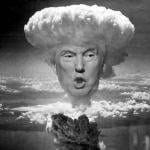
We still have a little bit more to do as I work my way through Bart J. Kowallis, “In the Thirty and Fourth Year: A Geologist’s View of the Great Destruction in 3 Nephi,” BYU Studies 37/3 (1997-1998):
Professor Kowallis describes the famous 1883 eruption of Krakatoa as “moderately large” and, in terms of “the distribution of rock fragments,” as “probably typical.” He cites the case of the ship Sir Robert Sale, which was about forty miles from the main blast; the ship’s records indicate that lumps of pumice about the size of pumpkins fell onto the deck. A Captain Watson, approximately ten miles from the volcano aboard the Charles Bal, recalled that
At five the roaring noise continued and was increasing; darkness spread over the sky, and a hail of pumicestone fell on us, of which many pieces were of considerable size and quite warm. . . . About six the fall of larger stones ceased, but there continued a steady downpour of a smaller kind, most blinding to the eyes, and covering the deck to a depth of three to four inches very speedily. While an intense blackness covered the sky and land and sea, we sailed on our course. (174)
In 1779, the volcano Sakurajima erupted in southern Japan. One woman described her attempt to escape the island:
I, myself, held a four year old child in my arms and led another of seven, and, so impeded, was forsaken by the boats. As I groped through the night, a stone, large as a hand-ball, struck the baby in the neck and killed her. She gave one cry and lay quite still, and all my efforts to save her were in vain. I prayed she might live a thousand generations, but all prayers failed, and the body became colder and colder. So I covered her face with a cloth, and wept over my dead. Just then a weary old man came creeping near and told of other people killed by falling stones, others dragging themselves along with broken legs, and some buried alive under sand drifts. (175)
Dr. Kowallis closes his discussion of 3 Nephi’s “broken and scattered rocks” as follows:
Volcanic eruptions are, as can be seen from the above accounts, very efficient at scattering broken rock fragments over a wide area and in causing great destruction and death due to this ejected material. This scattering of ejected rock could easily explain the broken rock fragments found over the whole land after the disaster in 3 Nephi. (176)











